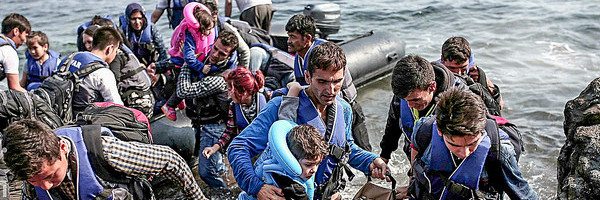Syrian refugees: Where do they go now?
[dropcap]F[/dropcap]aces and stories of the nearly 5 million Syrian refugees have been a constant presence in the media for the past few months. UN figures show that Syria’s population has shrunk from 22m to 16.6m. The large majority of these people have fled to neighbouring countries such as Lebanon, Turkey and Jordan.
However, since the beginning of this year, it is estimated that nearly 500,000 people have crossed the Mediterranean trying to reach safety in Europe. Around 3,000 have drowned.
According to a Swedish study, more than 40% of these refugees belonged to the middle-class back in Syria
These people are leaving everything behind and risking their lives in order to save their lives. The irony.They pile up into small plastic boats and sail towards the unknown just for a chance to a better future. They walk thousands of miles with no food or shelter to reach a country that will welcome them.
According to a Swedish study, more than 40% of these refugees belonged to the middle-class back in Syria: they had jobs and flats, many had completed higher education. They are now left with nothing, treated like less than humans, dying at the doors of Europe.
It seems like everywhere they go, it’s only a world of suffering, and humiliation that awaits them. In Lebanon – a country of 4m people – they are more than 1.6m and they are lacking basic needs. They live in poor humanitarian and sanitary condition and many of their children have been out of school since the beginning of the war.
the EU (…) has recently approved a scheme to distribute 120,00 additional asylum seekers among member states
Ironically enough, it is the countries with the less resources that bear the brunt of the Syrian refugee crisis with not enough help from the international community. Meanwhile, the rich countries of the Gulf haven’t taken a single one of them in.
The only solution left for them is to try and get to Europe, no matter the risk. With the increasing flow of people arriving at its borders, the EU was forced to react. It has recently approved a scheme to distribute 120,00 additional asylum seekers among member states, on top of 32,000 already agreed to in July.
This agreement will be binding to the countries that voted against it. Earlier in the summer, Hungary even built a 4 meters tall fence on its border with Serbia in order to stop refugees from passing through the country.
Many of the East European countries share the idea that they can’t host these refugees for cultural reasons and that western Europe is more able to adjust to multiculturalism.
Overall, this is undeniably one of the biggest humanitarian crisis of our time. And, as the conflict doesn’t seem to be resolving any time soon, it is imperative that we find permanent solutions and placements for Syria’s exiled children.

Comments